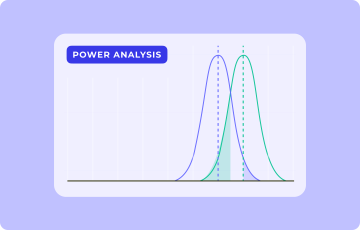
Customers have changed—have you?
This is the 1st of 4 articles covering Conversion Jam 2021, the largest conversion and growth event in the Nordics.
While many marketers and researchers have surprising findings about how consumer behavior has changed because of the pandemic, it's not always clear what brands should do to adapt.
On Nov. 12, Conversion Jam held the first of four online sessions with experts in growth experimentation, entitled Customers Have Changed—Have You?, to tackle this problem.
The session featured:
- Nathalie Nahai, bestselling author and host of The Hive Podcast
- Bart Schutz, consumer psychologist co-founder of Online Dialogue
Here’s how brands can tap into the societal and behavioral changes caused by the pandemic to come out ahead as customers change.
Test psychological principles, not just metrics
Don’t assume you know what consumers want. The biggest changes have happened in how consumers think about values and their conscious choices. Yet, it’s not clear exactly how the thought processes and values have changed—necessitating more experimentation. Despite the pandemic being the biggest experiment in consumer psychology since the internet, “the research has the coherence of an exploding confetti factory,” says Bart.
Run tests to discover which principles apply to your customers. Our assumptions about psychological principles are often incorrect. For example, risk aversion vs. risk-taking. You’d expect people to reduce risk in this time of uncertainty, but those who are traditionally risk-averse are actually taking more risks now. You have to find out what is the case with your store.
You have to test to find a balance between opposing principles. E.g. frugality vs. value; self-gratification vs. personal values. It’s not clear from gut feeling alone which comes out on top. Somebody might say: “I’ve been in this lockdown—I deserve to finally spend my money on all these trips I’ve wanted for some time.” However, they might just as easily say, “Maybe I shouldn’t be flying right now.
Implement experiment metrics related to value and purpose
Young consumers have different considerations when choosing brands. By 2029, consumers borns between 1981 and 2012 will make up 72% of the workforce. “We are seeing trends now among younger demographics, around social equality, racial justice, and environmental track records,” said Nathalie. “These things that are driving most of their consumer behaviors are going to be increasingly important within the next 5-10 years whether we want these people to work for us or buy products.”
Run experiments in a more strategic direction. Rather than just A/B testing CTR, cart abandonments rates, and other commercial metrics for their own sake, zoom out to and reposition your experimentation in the context of value and purpose. E.g. “Are we perceived as a sustainable company? Are we hurting vulnerable groups?”
Have more customer-centric, image-drive metrics. “This is one of the biggest challenges we currently have,” said Bart. “If we keep on focusing only on commercial metrics in our experimentation, it will be very bad for the way we are perceived and might end up with many people wanting to opt-out of experiments. Whereas if companies see [image-driven metrics] also in their benefit, we might have a better world in the end.”
Bart provided an example of image-driven experimentation. His team work working with a telecommunications client. “When we showed cheap plans first [in a series], we saw more plans purchased, but lower plans with less data. One of our psychologists thought this actually could be a bad thing for younger people under 18 because they use a lot of data and might exceed their limit. We did the analysis and found that this winning experiment was causing lots of young people to have the ‘Shopping Bill Effect’.”
Think about things customers really care about
There is far less customer loyalty than many think. The pandemic has allowed more people to make conscious purchasing decisions and decisions about habits. For example, they can now choose whether to go back to shopping for groceries in-person or continue online. They can go back to the office to seek out remote opportunities. Human behavior is very much based on environment, and consumers often choose new brands when going from offline to online and vice versa.
Consciously made decisions are more likely to stick. Some decisions—the “necessary” ones—will revert to normal, while our more conscious decisions will be more likely stick. Therefore, companies have to connect with companies on the level of values, not just price and convenience. Some trends we’ve seen during times of uncertainty and lost trust.
- People want more self-determination and agency
- People have a greater sense of competence and skill
- People have a greater sense of belonging and relatedness
Give customers the choice to direct their own experience. “Those [above three] are key areas, outside of values, that I suggest brands optimize for,” said Nathalie. One example she gave is Bloom & Wild, an online florist that pioneered the “Thoughtful Marketing Movement,” which gives customers the ability to opt out of any marketing message, putting them back in the driver's seat.



